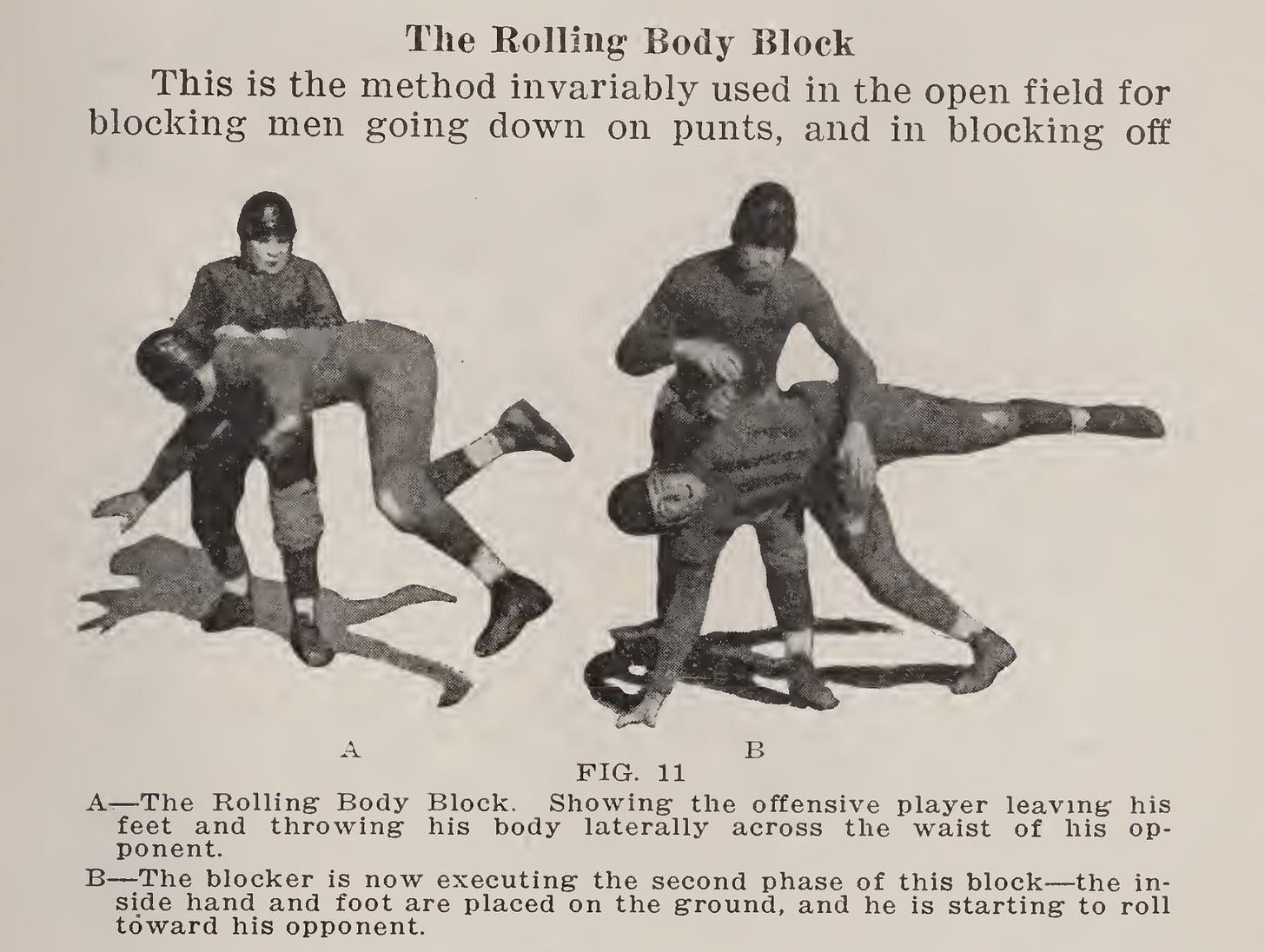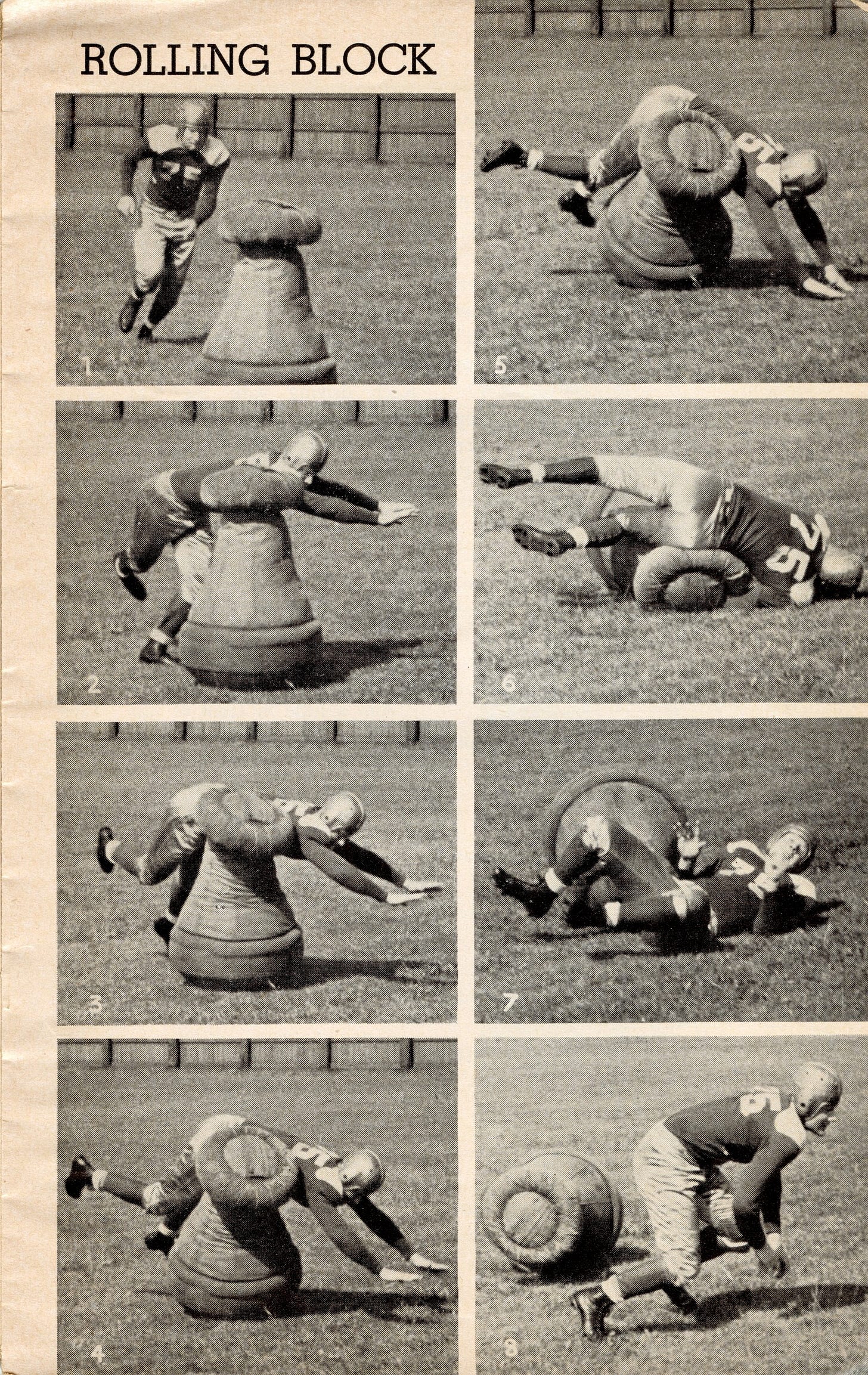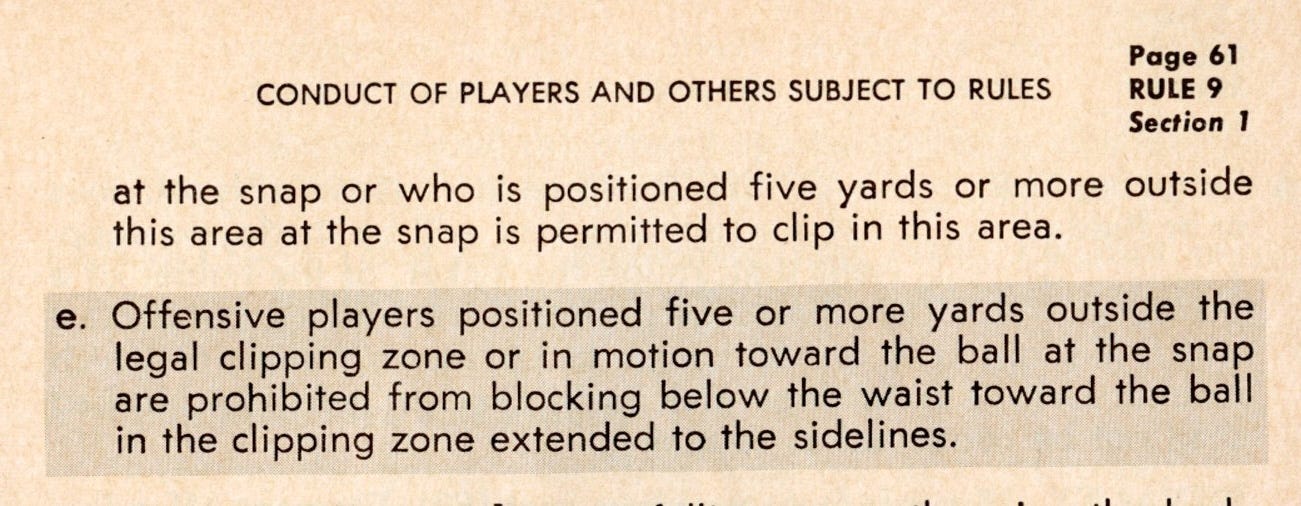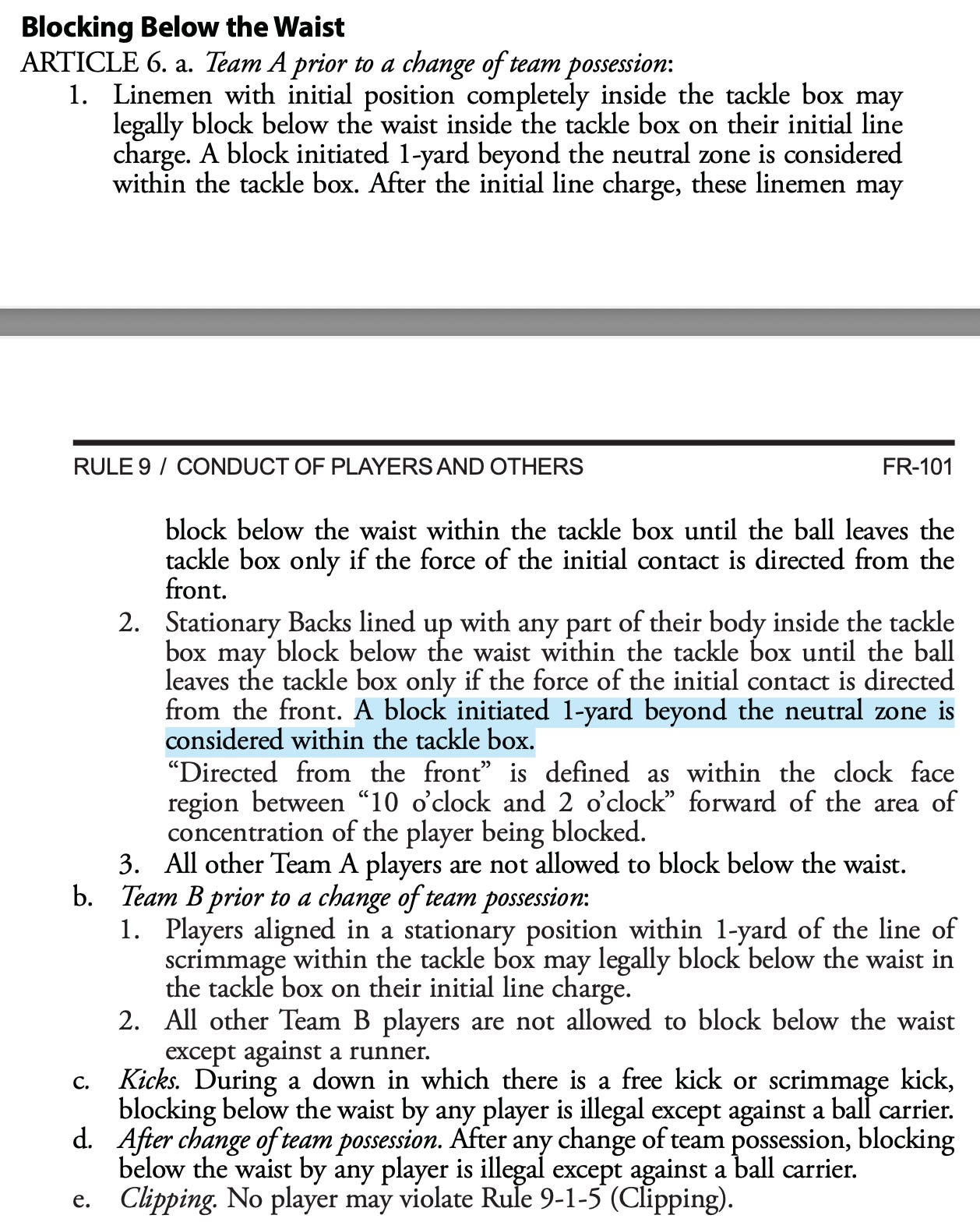Today’s Tidbit... A History Of Blocking Below The Waist
Since people first set down football rules on paper, some traditionalists have opposed proposed new rules by arguing that you could not play the game properly if restrictions A or B came to be. An example of this argument occurs today among some who oppose targeting penalties or the specific nature of those rules. They argue that tacklers sometimes cannot avoid hitting the runner’s or receiver’s head since it is a moving target. Of course, tacklers might have to tackle differently than they do today or give up an extra half yard, but some traditionalists don’t want tacklers to have to make such changes.
Similar arguments occurred in the past as the NCAA developed rules to limit blocking below the waist. During the 1960s, the NCAA Rules Committee focused considerable effort on making the game safer. Some rules required players to wear specific protective equipment or established standards for helmets and other gear. As an example, a 1970 rule limiting cleat length to no more than 1/2 inch in length reduced the number and severity of knee injuries.
Studies also showed that a significant portion of knee and ankle injuries resulted from players who were blocked below the waist, leading safety advocates to call for banning such blocks. Traditionalists argued against those rules, claiming you could not play football without blocking below the waist, but the last 40 years have shown that you can play football quite well without using such tactics. The game differs from what it once was, but everyone adjusted and moved on.
Depending on your age, you may not remember the days when blocking below the waist was an everyday part of football. Blockers running downfield in advance of a runner could not extend their arms when blocking, so they commonly used the rolling or body blocking technique in the open field, which saw blockers throw their body into the defender’s legs, rolling into the defender to knock them down.
The rolling block was a standard technique drilled into every player on fields across America. Rolling blocks were so common that football equipment catalogs featured body blocking pads to protect blockers’ ribs. (The next Tidbit will cover those pads.) Given the frequent use of body blocking, it was understandable that many coaches did not want to give up one of their sacred techniques, but player safety demanded the change.
Given opposition to an outright ban on blocking below the waist, the subcommittee led by Hal Lahar, a longtime Colgate and Houston coach, changed tack and proposed eliminating the most dangerous forms of blocking below the waist, ticking off rule change after another for the next few decades.
Their first target was the crackback block, a blindside block that occurred when teams put flankers in motion to the inside or had wide receivers attack the lower legs of defensive ends or linebackers. It was a brutal tactic and a frequent cause of leg injuries, so the Rules Committee banned it in 1971.
The next target was the blocking below the waist that followed a change of possession on kicks, which had also produced many injuries. A 1974 rule banned blocking below the waist on free kicks (kickoffs, kicks following safeties) and outside the free-clipping zone on scrimmage kicks (punts, field goals, and extra points).
Among the most dangerous remaining situations came when players were blocked below the waist following turnovers, so a 1979 rule eliminated those from the game. Other expansions including banning the block for the entirety of kicking plays, not just after a change of possession (in 1985), and an 1987 ban on defensive players blocking below the waist at any time, such as cornerbacks cut down receivers at the line of scrimmage.
A 2003 rule made blocking below the waist legal only for players inside the tackle box at the snap. The rule now allows blocking below the waist only by offensive linemen and stationary backs inside the tackle box. It also requires that the block occur on the initial charge, and you must direct the block at the front of the defender.
Over time, the rulemakers eliminated a dangerous element of the game without changing the nature of football. Crackback and blindside blocks below the waist that once ended playing careers have been eliminated and despite initial opposition to eliminating blocking below the waist, it would be hard to find anyone who now yearns for those good old days.
Football Archaeology is reader-supported. Click here to donate a couple of bucks, buy one of my books, or otherwise support the site.







